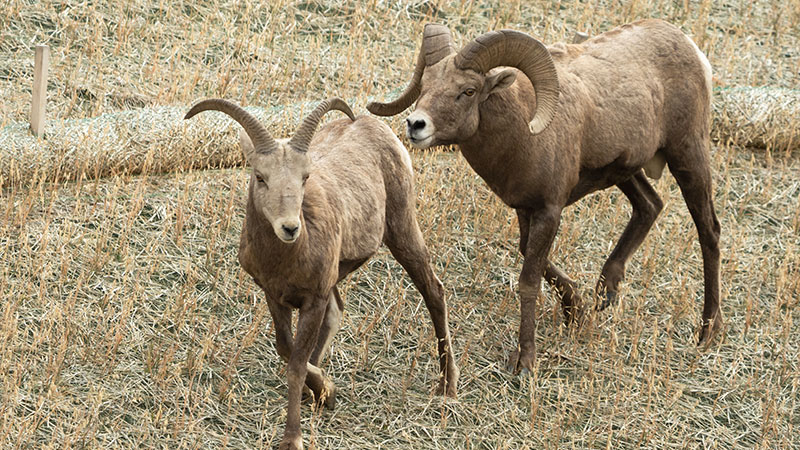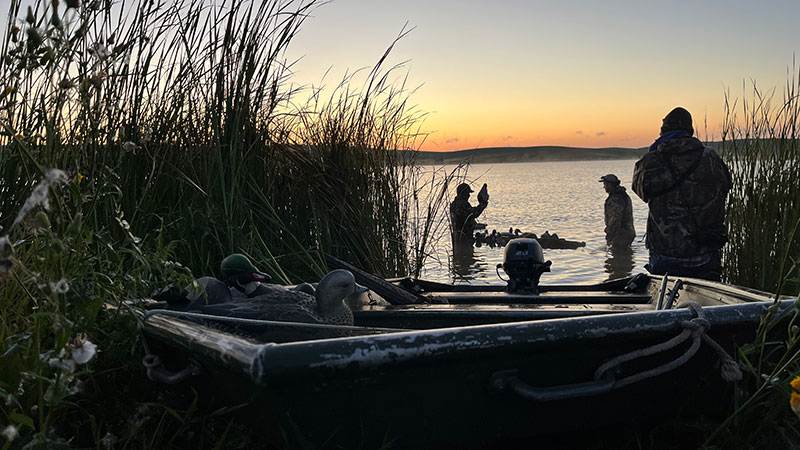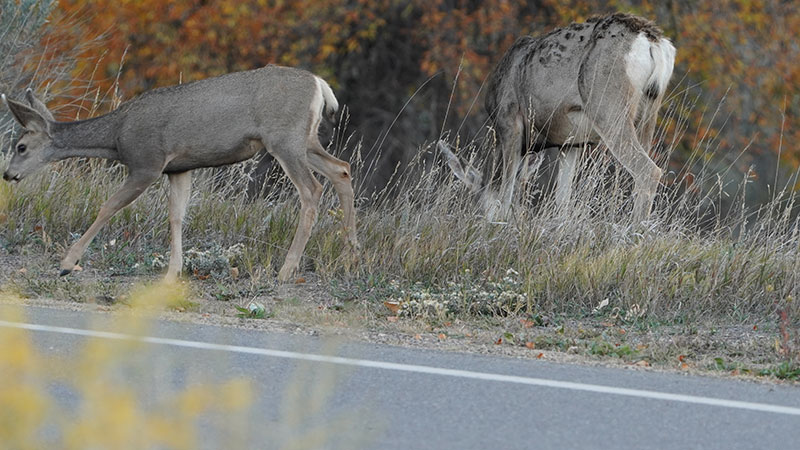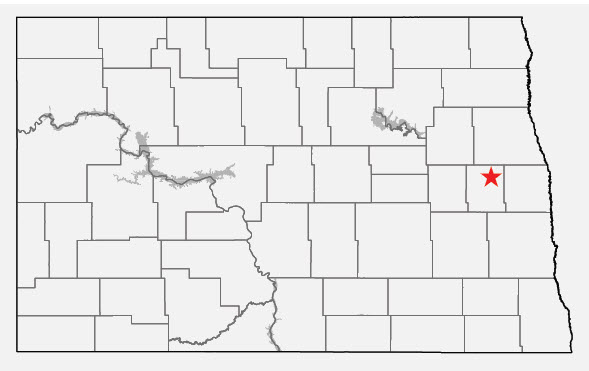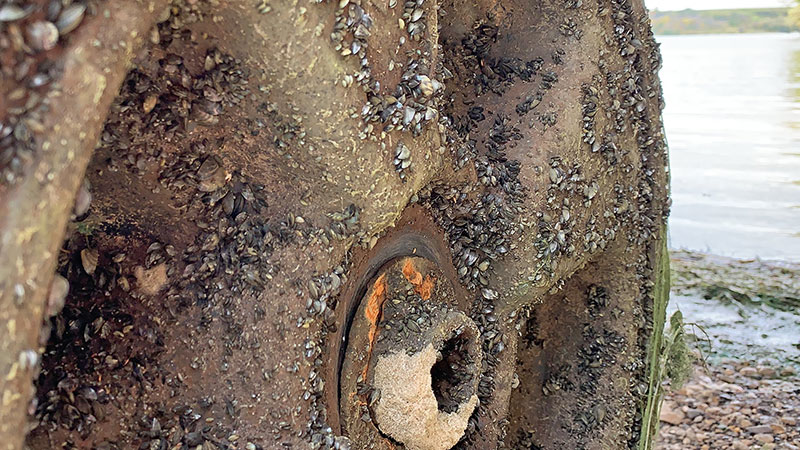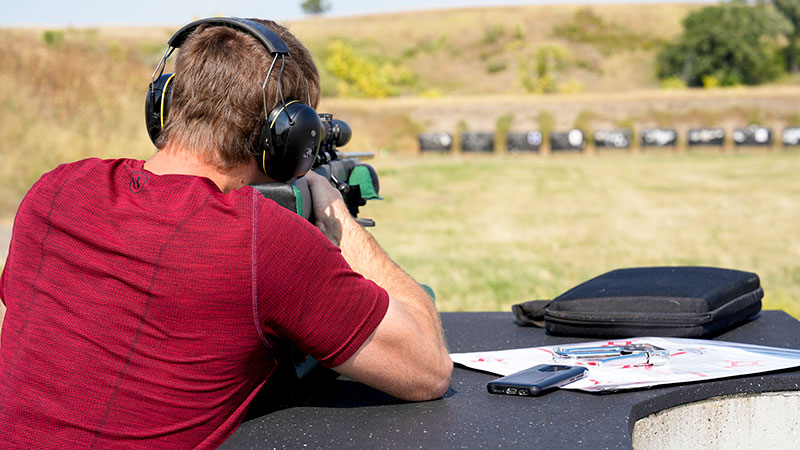The North Dakota Game and Fish Department allocated seven bighorn sheep licenses for the 2024 hunting season, one more than last year.
One license was issued in unit B1, two in B3, two in B4 and one in B5. In addition, one license, as authorized under North Dakota Century Code, was auctioned in March by the Midwest Chapter of the Wild Sheep Foundation, from which all proceeds are used to enhance bighorn sheep management in North Dakota.
In total, 19,889 applicants applied for bighorn sheep. In 2023, a record 20,290 hunters applied for a chance to hunt.
Prospective hunters were required to apply for a bighorn license earlier this year on the bighorn sheep, moose and elk application.
Waterfowl hunters should do their part in preventing the spread of aquatic nuisance species into or within North Dakota.
Hunters must remove aquatic plants and plant fragments from decoys, strings and anchors; remove aquatic plant seeds and plant fragments from waders and other equipment before leaving hunting areas; remove all water from decoys, boats, motors, trailers and other watercraft; and remove all aquatic plants from boats and trailers before leaving a marsh or lake.
In addition, hunters are encouraged to brush their hunting dogs free of mud and seeds.
Cattails and bulrushes may be transported as camouflage on boats. All other aquatic vegetation must be cleaned from boats prior to transportation into or within North Dakota.
Drain plugs on boats must remain pulled when a boat is in transit away from a water body.
In addition, hunters are reminded of a state law that requires motorized watercraft, including motorized duck boats, operated on state waters and not licensed in North Dakota, to display an ANS sticker, including an ANS fee of $15 to be paid each calendar year.
Waterfowlers hunting from boats are encouraged to wear properly fitted life jackets while on the water.
Hunting coats with life jackets built in are light and comfortable to wear. In addition, wearing a life jacket will not only keep the overboard hunter afloat, but also slow the loss of critical body heat caused by exposure to cold water.
Capsizing and falling overboard from small boats are the most common types of fatal boating accidents for hunters.
Motorists should watch for deer along roadways this time of year as juvenile animals disperse from their home ranges.
October through early December is the peak period for deer-vehicle accidents. Motorists are advised to slow down and exercise caution after dark to reduce the likelihood of encounters with deer. Most deer-vehicle accidents occur primarily at dawn and dusk when deer are moving around.
When you see one deer cross the road, look for a second or third deer to follow. Also, pay attention on roadways posted with Deer Crossing Area caution signs.
Deer-vehicle accidents are at times unavoidable. If an accident does happen, law enforcement authorities do not have to be notified if only the vehicle is damaged. However, if the accident involves personal injury or other property damage, then it must be reported.
In addition, a permit is required before taking possession of road-killed deer. Permits are free and available from Department game wardens and local law enforcement.
A few precautions can minimize chances of injury or property damage in a deer-vehicle crash.
- Always wear your seat belt.
- Don’t swerve or take the ditch to avoid hitting a deer. Try to brake as much as possible and stay on the roadway. Don’t lose control of your vehicle or slam into something else to miss the deer. You risk less injury by hitting the deer.
- If you spot deer ahead, slow down immediately and honk.
The North Dakota Game and Fish Department confirmed the presence of invasive zebra mussels in South Golden Lake, Steele County, after detecting zebra mussel veligers in routine net samples.
Ben Holen, Department aquatic nuisance species coordinator, said follow-up sampling found additional adult mussels in the 331-acre lake that is a popular recreation destination located 13 miles southwest of Hatton.
Due to its immediate downstream connection, North Golden will be listed with South Golden Lake as Class I ANS infested waters. These lakes join Lake Elsie, Twin Lakes, Lake LaMoure, Lake Ashtabula, lower portion of the Sheyenne River, and the Red River in this designation. Emergency rules will go into effect immediately to prohibit the movement of water away from the lake, including water for transferring bait. Notices will be posted at lake access sites.
Zebra mussels are just one of the nonnative aquatic species that threaten our waters and native wildlife. After using any body of water, people must remember to follow North Dakota regulations:
- Remove aquatic vegetation before leaving the water access and do not import into North Dakota.
- Drain all water before leaving the water access.
- Remove drain plugs and devices that hold back water and leave open and out during transport.
- Do not import aquatic bait into the state. For Class I ANS infested waters, aquatic bait cannot be transported away from the water. In all other areas, bait must be transported in a container that holds 5 gallons or less. It is illegal to dump unused bait on shore or into the lake.
In addition to North Dakota regulations, the Game and Fish Department strongly recommends the following:
- Avoid mooring watercraft in zebra mussels infested waters.
- Clean – remove plants, animals and excessive mud prior to leaving a water access.
- Drain – drain all water prior to leaving a water access.
- Dry – allow equipment to dry completely or disinfect before using again. This includes boat docks and boat lifts. North Dakota Administrative Code states that “All docks, lifts and related equipment must be dried and left out of water for at least 21 days before they may be placed in another water.”
For more information about ANS in North Dakota, options for disinfection, or to report a possible ANS, visit gf.nd.gov/ans.
The North Dakota Game and Fish Department is asking water recreationists and property owners to check for zebra mussels and other aquatic nuisance species when removing boat lifts, docks and other equipment from state waters.
Ben Holen, Department ANS coordinator, said water recreationists and property owners play a vital role in ANS prevention.
Zebra mussels attach to hard surfaces that are left in the water for long periods of time, first settling in tight spaces and areas that are protected from sunlight, Holen said. Equipment such as boat lifts and docks are high risk vectors for spreading ANS, especially zebra mussels.
Holen said it makes it easier to do a thorough search when equipment is taken out of the water in fall. Pay special attention to wheel wells, right angles on frames, and areas otherwise protected from sunlight. Feel for attached organisms that have small hair-like structures holding them in place. Small mussels can feel like rough sandpaper and adults can be as large as 2 inches long.
Holen said if you think you’ve found a zebra mussel, take photos, write down any relevant information, such as how many were found and where, and report it online at the Game and Fish website gf.nd.gov/ans
With North Dakota’s deer gun season opening in early November, many hunters will be looking for a place to sight in their firearms to get ready for the season.
The North Dakota Game and Fish Department manages five gun ranges on wildlife management areas in the state, and also partners with many local clubs around North Dakota to offer many other public shooting facilities.
The gun ranges managed by the Game and Fish Department include:
- Lewis and Clark WMA, located 6 miles southwest of Williston.
- Little Heart (Schmidt) Bottoms, located 12 miles south of Mandan off ND Highway 1806.
- MacLean Bottoms, located 2 miles south of ND Highway 1804, about 15 miles southeast of Bismarck.
- Riverdale WMA, located 2 miles southwest of Riverdale.
- Wilton Mine WMA, located 2 miles east of Wilton.
The Department may periodically close these ranges for routine maintenance and improvements. The status of each range can be found online. The website also provides a detailed listing of other shooting facilities in North Dakota.
A permit is required before taking possession of a dead deer. Only shed antlers can be possessed without a permit.
Permits are free and available from North Dakota Game and Fish Department game wardens and local law enforcement offices.
In addition, hunters should properly dispose of dead deer. Carcass waste cannot be left on public property, including roadways, ditches or wildlife management areas.
If transported outside of its respective gun unit, carcass waste must be disposed of via landfill or waste management provider. This requirement does not apply to heads dropped off at chronic wasting disease collection sites, or lymph nodes submitted for CWD surveillance.
The North Dakota Game and Fish Department is taking orders for its North Dakota OUTDOORS calendar, the source for all hunting season and application dates for 2025. Along with color photographs of North Dakota’s wildlife and outstanding scenery, it also includes sunrise-sunset times and moon phases.
Calendars must be ordered online.
The calendar is the North Dakota OUTDOORS magazine’s December issue, so current subscribers will automatically receive it in the mail.
Whooping cranes are migrating south, and sightings will increase as they make their way into and through North Dakota this fall. Anyone seeing these endangered birds as they move through the state is asked to report sightings so the birds can be tracked.
The whooping cranes that make their way through North Dakota each fall are part of a population of about 500 birds that are on their way from nesting grounds at Wood Buffalo National Park in Canada to wintering grounds at Aransas National Wildlife Refuge in Texas, a distance of about 2,500 miles.
Whoopers stand about five feet tall and have a wingspan of about seven feet from tip to tip. They are bright white with black wing tips, which are visible only when the wings are outspread. In flight they extend their long necks straight forward, while their long, slender legs extend out behind the tail. Whooping cranes typically migrate singly, or in groups of 2-3 birds, and may be associated with sandhill cranes.
Other white birds such as snow geese, swans and egrets are often mistaken for whooping cranes. The most common misidentification is pelicans, because their wingspan is similar, and they tuck their pouch in flight, leaving a silhouette like a crane when viewed from below.
Anyone sighting whoopers should not disturb them, but record the date, time, location and the birds’ activity. Observers should also look closely for and report colored bands which may occur on one or both legs. Whooping cranes have been marked with colored leg bands to help determine their identity.
Whooping crane sightings should be reported to the U.S. Fish and Wildlife Service offices at Lostwood, 701-848-2466; Audubon, 701-442-5474; the North Dakota Game and Fish Department, 701-328-6300; or to local game wardens across the state. Reports help biologists locate important whooping crane habitat areas, monitor marked birds, determine survival and population numbers, and identify times and migration routes.
Jackie Ressler, Game and Fish Department marketing specialist, was awarded the 2024 Governor’s Pioneer Award in September for her efforts to increase the Department’s social media presence, create new partnerships and lead marketing campaigns on crucial topics such as aquatic nuisance species, job recruitment, boater safety, hunting and fishing participation and more.
“Team North Dakota members continue to excel in serving our state’s citizens and delivering on our shared purpose: to Empower People, Improve Lives and Inspire Success,” said Gov. Doug Burgum. “The record number of nominations we received this year — over 1,400 submissions across more than 55 agencies — highlights the exceptional work of our team members. We are incredibly grateful to these individuals and their teams for their dedication and unwavering commitment to our state and its citizens.”


